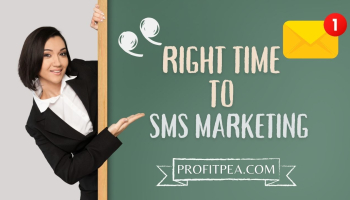HOW TO USE INFLUENCER MARKETING TO PROMOTE YOUR BRAND
In today’s digital age, influencer marketing has become an increasingly popular way for brands to promote themselves and connect with their target audience. Influencers are people who have a significant following on social media and are trusted and respected in their respective niches. By partnering with influencers, brands can leverage their audience to promote their products or services. In this article, we’ll explore how to use influencer marketing to promote your brand effectively.
Check Out My #1 Proven Method to Earn $100-$500/Day with FREE Traffic

Table of Contents
Step 1: Identify Your Goals
Before you start your influencer marketing campaign, you need to define your goals. What do you want to achieve? Do you want to increase brand awareness, drive sales, or build brand loyalty? Once you have identified your goals, you can choose the right influencers who can help you achieve them.
Step 2: Identify the Right Influencers
The next step is to identify the right influencers for your brand. Look for influencers who align with your brand’s values, mission, and target audience. You can use various tools like BuzzSumo, Klear, or Followerwonk to identify influencers in your niche. Look for influencers who have a high engagement rate and whose followers are relevant to your brand.
Step 3: Build Relationships with Influencers
Once you have identified potential influencers, you need to build relationships with them. Follow them on social media, engage with their content, and share their posts. Reach out to them through email or direct messages and introduce your brand. Offer them a sample of your product or service and ask them to share their feedback. Building a relationship with influencers is crucial as it will help you establish trust and credibility.
Step 4: Create a Campaign Strategy
Now that you have built relationships with influencers, it’s time to create a campaign strategy. Define the scope of the campaign, the type of content you want the influencers to create, and the timeline. Make sure the content aligns with your brand’s values and is relevant to your target audience. Offer the influencers creative freedom while also providing them with guidelines to follow.
Step 5: Track and Measure Results
Once the campaign is live, track and measure the results. Use tools like Google Analytics, social media insights, or influencer marketing platforms like Influencer.co to track the campaign’s performance. Measure metrics like reach, engagement, conversions, and ROI. Analyze the results to see what worked and what didn’t and use the insights to refine your future campaigns.
In conclusion, influencer marketing can be a powerful way to promote your brand and reach your target audience. By following the steps outlined in this article, you can use influencer marketing effectively and achieve your marketing goals. Remember to be patient and consistent, as building relationships with influencers takes time, but the results can be significant.
Identify Your Goals
Setting goals is a critical first step in achieving success in any aspect of life. Whether you’re starting a new business, launching a new product, or pursuing personal growth, identifying your goals is essential. In this article, we’ll discuss the importance of setting goals and how to identify your goals effectively.
- Why Identify Your Goals: Setting goals helps you create a roadmap for success. It gives you a clear sense of direction and focus, helping you stay on track and avoid distractions. When you have clear goals, you can measure progress and stay motivated, even when facing challenges. Goals also help you prioritize and make decisions that align with your vision for the future.
- Start with your vision: Begin by imagining what you want to achieve in the long term. Visualize your ideal future and think about what you want to accomplish in your personal and professional life. Write down your vision and use it as a guide when setting your goals.
- Break it down: Once you have your vision, break it down into smaller, achievable goals. Ask yourself what steps you need to take to achieve your vision and what milestones you need to reach along the way. Create a timeline and set deadlines to keep yourself accountable.
- Make it SMART: Make sure your goals are SMART – Specific, Measurable, Achievable, Relevant, and Time-bound. Specific goals are clear and well-defined, measurable goals have a metric for success, achievable goals are realistic, relevant goals align with your vision, and time-bound goals have a deadline.
- Prioritize: Prioritize your goals based on their importance and urgency. Focus on the goals that will have the most significant impact on your vision and break them down into smaller, achievable steps.
It gives you direction, focus, and motivation, helping you stay on track and achieve your vision for the future. By following the steps outlined in this article, you can identify your goals effectively and create a roadmap for success
Identify the Right Influencers
Check Out My #1 Proven Method to Earn $100-$500/Day with FREE Traffic
Influencer marketing has become a popular way for brands to connect with their target audience and promote their products or services. Influencers are individuals who have a significant following on social media and are respected and trusted by their audience. Partnering with influencers can help brands reach new audiences and build credibility. However, it’s essential to identify the right influencers to ensure the success of your campaign. In this article, we’ll discuss how to identify the right influencers for your brand.
- Define Your Target Audience: Before you start searching for influencers, you need to define your target audience. Who do you want to reach? What are their interests, demographics, and behavior? Understanding your target audience will help you identify influencers who can effectively reach and engage with them.
- Research and Analyze Influencers: Once you’ve defined your target audience, you can start researching and analyzing influencers. Look for influencers who align with your brand’s values, mission, and target audience. Use social media monitoring tools like BuzzSumo, Klear, or Followerwonk to identify influencers in your niche. Look for influencers who have a high engagement rate and whose followers are relevant to your brand.
- Analyze Their Content: Once you’ve identified potential influencers, analyze their content. Look at the type of content they post and the tone and style of their messaging. Does it align with your brand’s values and voice? Is their content engaging and relevant to your target audience? Analyzing their content will help you determine if they’re a good fit for your brand.
- Check Their Audience Engagement: In addition to analyzing their content, it’s essential to check their audience engagement. Look at the comments, likes, and shares on their posts. Are their followers engaged with their content? Do they have a loyal following? Checking their audience engagement will help you determine if their followers are real and active.
- Consider Their Influence: Finally, consider their influence. Look at their reach, impact, and authority in their respective niche. Are they considered a thought leader in their industry? Do they have a significant influence on their followers? Consider their influence when choosing influencers for your campaign.
By defining your target audience, researching and analyzing influencers, analyzing their content, checking their audience engagement, and considering their influence, you can identify influencers who can effectively promote your brand and connect with your target audience.
Build Relationships with Influencers
Influencer marketing is a powerful way to connect with your target audience and build brand awareness. Partnering with influencers can help you reach new audiences, build credibility, and promote your products or services. However, to achieve the best results, it’s important to build strong relationships with influencers. In this article, we’ll discuss how to build relationships with influencers.
- Research and Reach Out: The first step in building relationships with influencers is to research and reach out to them. Start by identifying influencers who align with your brand’s values and mission. Use social media monitoring tools to find influencers in your niche and reach out to them via email or direct message. Be specific about why you’re reaching out and what you’re looking to achieve. Make sure to personalize your message and show that you’ve done your research.
- Provide Value: Influencers receive numerous partnership requests every day, so it’s important to provide value. Offer influencers something unique or valuable in exchange for their partnership, such as access to exclusive products or services, early access to new releases, or the opportunity to collaborate on content. Providing value can help build trust and establish a long-term relationship with influencers.
- Collaborate on Content: Collaborating on content is an effective way to build relationships with influencers. Work with influencers to create content that aligns with your brand’s message and their audience’s interests. Encourage influencers to share their own ideas and input, and provide feedback and guidance to ensure the content meets your goals. Collaborating on content can help build a deeper relationship with influencers and showcase their creativity and expertise.
- Engage with Influencers: Engaging with influencers on social media is a great way to build relationships. Follow influencers on social media, like and comment on their posts, and share their content with your audience. Engaging with influencers can help build rapport and establish a connection beyond the partnership.
- Stay in Touch:Finally, staying in touch with influencers is essential for building lasting relationships. Keep them updated on your brand’s latest developments, and let them know how their partnership has helped your business. Consider sending personalized gifts or notes to show your appreciation and maintain a positive relationship.
In conclusion, building relationships with influencers is crucial for the success of your influencer marketing campaign. By researching and reaching out, providing value, collaborating on content, engaging with influencers, and staying in touch, you can build strong relationships that benefit both your brand and the influencer.
Create a Campaign Strategy
Campaign strategy is an essential element in any marketing campaign. It is the roadmap that guides marketers on how to reach their target audience and achieve their marketing goals. Whether you are promoting a new product or service, launching a new brand, or aiming to increase sales, creating a campaign strategy is crucial for success.
- Define your campaign goals: Before starting any campaign, it’s essential to define your goals. What do you want to achieve through this campaign? Is it to increase brand awareness, generate leads, boost sales, or all of the above? Having a clear understanding of your objectives will help you create a campaign strategy that is tailored to your needs.
- Identify your target audience: Your target audience is the group of people you want to reach with your campaign. It is crucial to identify your target audience’s demographics, interests, and behaviors to create a campaign strategy that resonates with them. You can use market research, customer surveys, or social media analytics to get insights into your target audience.
- Determine your budget: Your budget will determine the scope and scale of your campaign. It’s important to allocate your budget wisely and ensure that it aligns with your campaign goals. You should also consider the costs of different marketing channels, such as social media advertising, email marketing, or influencer marketing, to determine the best approach for your budget.
- Choose your marketing channels: Choosing the right marketing channels is crucial to the success of your campaign. Depending on your target audience, you may opt for social media, email marketing, search engine marketing, or a combination of these. It’s important to choose the channels that will reach your target audience effectively.
- Develop your messaging: Your messaging should be tailored to your target audience and align with your campaign goals. Your messaging should be clear, concise, and compelling, and it should highlight the unique value proposition of your product or service. You should also consider the tone and voice of your messaging and ensure that it resonates with your target audience.
- Create a content calendar: A content calendar helps you plan and schedule your campaign content effectively. It’s important to create a content calendar that aligns with your messaging and campaign goals. Your content calendar should include the type of content, the channel, the date, and the time of publication.
- Measure and analyze your results: Measuring and analyzing your campaign results is crucial to understanding its effectiveness. You can use analytics tools to track your campaign’s performance and identify areas for improvement. This will help you optimize your campaign strategy and achieve better results in future campaigns.
In conclusion, creating a campaign strategy is crucial for the success of any marketing campaign. By following these steps, you can create a campaign strategy that is tailored to your needs, reaches your target audience effectively, and achieves your marketing goals.
Track and Measure Results
Check Out My #1 Proven Method to Earn $100-$500/Day with FREE Traffic
In today’s fast-paced business environment, it’s essential to track and measure results regularly. This process allows you to evaluate your progress, identify areas for improvement, and make necessary changes to achieve your goals. Whether you’re running a small business, managing a team, or working on a personal project, tracking and measuring results can help you stay on track and achieve success.
- Define Your Goals: The first step in tracking and measuring results is to define your goals clearly. You can’t measure progress if you don’t know where you’re headed. Take some time to determine what you want to achieve and establish specific, measurable goals. These goals should be specific, measurable, achievable, relevant, and time-bound.
For example, if you’re running a small business, your goal might be to increase revenue by 10% in the next quarter. This goal is specific, measurable (you can track revenue), achievable, relevant (it’s important to your business), and time-bound (you have a deadline of the next quarter).
- Track Your Progress
Once you’ve established your goals, the next step is to track your progress. There are many ways to do this, depending on your goal and the tools available to you. For example, if your goal is to increase revenue, you might track your sales daily, weekly, or monthly. If you’re working on a personal project, you might use a task management app to track your progress on each task.
- Measure Your Results
After you’ve been tracking your progress for a while, it’s time to measure your results. This involves comparing your current progress to your initial goals and evaluating how far you’ve come. For example, if your goal was to increase revenue by 10% in the next quarter, you would compare your revenue for the quarter to the revenue from the previous quarter.
- Make Necessary Changes
The final step in tracking and measuring results is to make necessary changes. If you’re not achieving your goals, it’s essential to determine why and make changes accordingly. For example, if your marketing strategy isn’t working, you might need to try a new approach. If you’re not making progress on a task, you might need to break it down into smaller, more manageable steps.
- Conclusion
Tracking and measuring results is an essential process for achieving success in any endeavor. By defining your goals, tracking your progress, measuring your results, and making necessary changes, you can stay on track and achieve your goals. Whether you’re running a business, managing a team, or working on a personal project, tracking and measuring results can help you achieve success.
I appreciate you reading my full article on how to use influencer marketing to promote your brand.







I am applying for your position of making a difference and dealing with the public from our own home
….
I’m interested